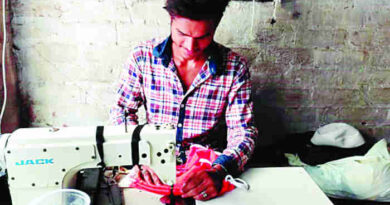$180K awarded for women forced to remove hijabs in police custody
Three Muslim women have each reached a $60,000 settlement with New York City after they were forced to remove their hijabs to be photographed while in police custody, according to a city official and court documents obtained on Feb. 28.
Documents outlining the settlements were filed in Brooklyn federal court on Feb. 26 and reported by the The New York Daily News on Feb. 27. Asked about the report, Kimberly Joyce, a spokeswoman for the city’s Law Department, said in an emailed statement, “The resolution of these matters were in the best interest of all parties involved.”
The settlements involved separate cases claiming that the women’s religious rights had been violated.
In 2012, a Brooklyn high school student detained on a harassment complaint was told to remove her headscarf to be photographed at a central booking center in the borough. She had asked that a female officer take her picture in private, but the request was rejected, according to a complaint filed in district court that year.
In 2015, a woman identified as J.H. was also told to remove her hijab at Brooklyn Central Booking, even though she explained she could not do so in the presence of men who were not family members, a complaint said.
After she was photographed, an officer said, “Wow, wow, wow” about her hair, and male detainees laughed and made inappropriate comments, the complaint said.
The same year, a Queens woman was taken into police custody after a dispute with a neighbor over a parking space. She was taken to the hospital and then to central booking, where she was photographed without her hijab, despite her objections, a complaint said.
The women were arraigned on their criminal charges, but their cases were resolved without conviction and sealed, Tahanie A. Aboushi, a lawyer for the women, said in an interview on Feb. 27.
Aboushi said the cases touched on a broader point about the religious dress that could apply to a number of people, including Orthodox Jewish women wearing modest clothing and Sikh men wearing turbans.
In 2012, the New York Police Department patrol guide did not provide guidance for religious coverings as they related to photographs, she said. Some precincts and central booking facilities photographed Muslim women with their hijab, while others would request that it be removed, she said.
“It was discretionary,” Aboushi said.
In 2015 and 2017, the department issued interim orders that people who were arrested could be photographed with religious head coverings at precincts or taken to a private area to be photographed at One Police Plaza, the headquarters compound in Manhattan.
The cases are examples of how law enforcement officials, airport security personnel, and even some employers have had to address or modify policies and practices to accommodate religious requirements.
In 2016, a sheriff in Maine, Kevin Joyce of Cumberland County, publicly apologized after his department released mug shots of Muslim women without their hijabs. The women had been arrested after Black Lives Matter protests.
“With everything going on nationally, I think it is important the public understand we are transparent, we make mistakes on occasion, we are not going to cover them up and we are going to do our best and learn from them,” he told The Portland Press Herald.
National advocacy and civil rights organizations have also addressed the issue, particularly at airports, where Muslim and Sikh travelers often say they are subjected to longer security checks because of their dress.
In 2016, a well-known Sikh American actor, Waris Ahluwalia, was not allowed to board an airplane in Mexico City because he refused to remove his turban during a security check. His refusal led to a two-day standoff with the airline Aeroméxico before he was allowed to fly home to the United States.
Many government agencies, including motor vehicle departments and passport offices, allow women to wear their religious gear as long as it does not obstruct the face.
Johnathan Smith, the legal director for Muslim Advocates, said he believed most lawsuits involving hijabs had taken place in the context of employment.
But, he added, “We regularly hear complaints from people who encounter a whole host of obstacles, from people who wear religious head coverings or people who fit the profile of what a Muslim looks like.”
First published in The New York Times




